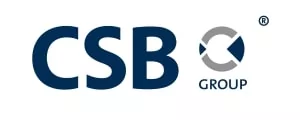- within Media, Telecoms, IT, Entertainment, Real Estate and Construction and Immigration topic(s)
Persisting trends against a positive outlook
Several trends within the European hedge fund industry that have been recurring over the past few years and continue to occur in the present seem to have given rise to more defined industry contexts against which they need to be assessed. Amongst these trends, one finds the existentialist crisis affecting various fund strategies, changes related to the AIFMD as well as the decline of the FoHF model.
In the face of the highest rate of HF closures recorded since 2010, exceeding for the first time that of new launches in 2014, AUMs in Europe grew substantially thanks to the popularity of UCITs hedge funds.
AUM growth and UCITS & market sensitivities
Eurekahedge has recently confirmed that, "the rate of fund closures [...] has been trending steadily upwards every year since [2010]" alongside widespread agreement by several sources that around 400 hedge funds in Europe were closed throughout 2014. However, this piece of sad-sounding news could have multiple positive long-term implications for the industry.
The AUMs of hedge funds managed by Europe-based managers grew by approximately USD33 billion in 2014. This implies two main important factors;
- Large funds tend to be getting larger – This was recorded in the combination of net closures and AUM growth and further traced in the difficulty encountered by managers of emerging funds in attracting investors.
- Net inflows supersede performance in being responsible for a large portion of AUM growth – investors are once again looking towards European managers, particularly after leaving AIFMD-related uncertainties behind their backs.
Furthermore, changes in both hedge fund numbers and AUM repartition are unevenly-split, especially between UCITs and non-UCITs. These has become much more evident along the past two years.
Keith Black (PhD, CFA, CAIA) has recently confirmed an increased demand for liquidity, particularly in Europe and considering that 2014 saw a USD70 billion inflow into alternative UCITS.
Accelerated degree of convergence between the conventional hedge fund model and the liquid alternative framework
Dr Black has also noticed that European investors have much more confidence in the European version of the liquid alternative than the Americans, as the latter remain strong advocates of the traditional offshore and less liquid method. However, the future of the latter model within Europe still stands to de discussed.
Turning towards the European sphere, however, the conventional hedge fund model and the liquid alternative framework are rapidly converging and forming a wider variety of products available to the same investors in the process. There was also a net investment flow into funds managed by European managers.
European markets are attractive investment targets
Europe appears to be still struggling competing with the US equity long / short product offering and local managers' performance in this respect appears to leave much to be desired. However, countering a scenario characterised by lack of European activism, both qualitative and quantitative data supports the idea of European managers having some sort of specialists' skills.
In addition, European managers were successful in attracting a net inflow of capital, encouraging European investors to allocate more capital in the oncoming 12-month period.
The content of this article is intended to provide a general guide to the subject matter. Specialist advice should be sought about your specific circumstances.


